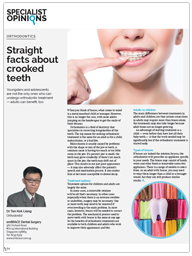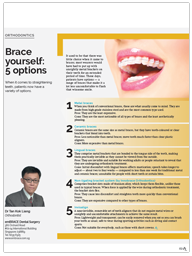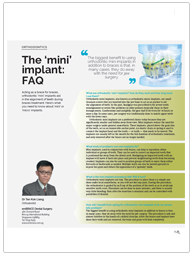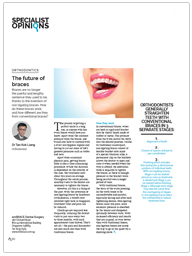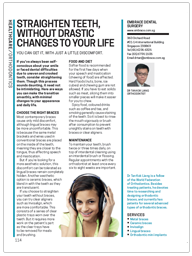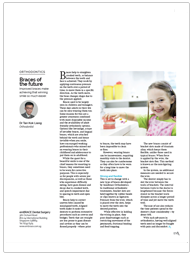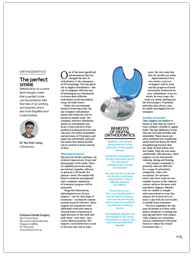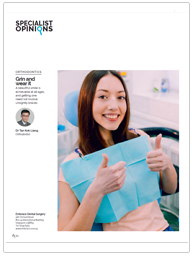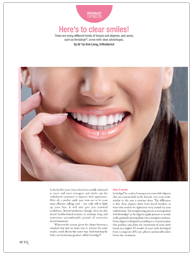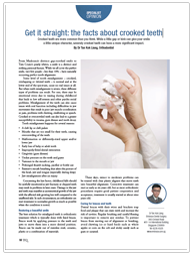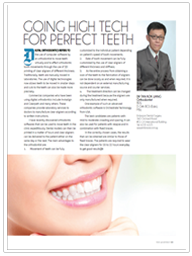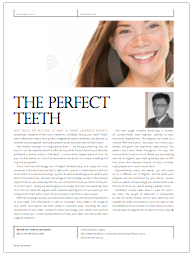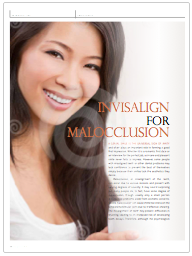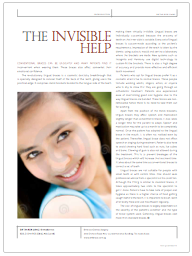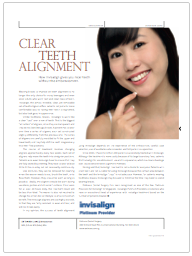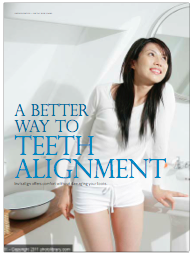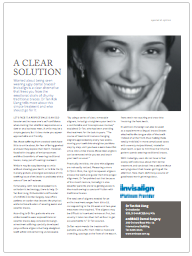IT’S NOT JUST A MATTER OF AESTHETICS – CROOKED TEETH CAN CAUSE A HOST OF LONG-TERM DENTAL, MEDICAL AND SOCIAL PROBLEMS
Many of us wish we were born with perfect teeth. Unfortunately, various issues can contribute to crooked, overlapping, or twisted teeth. Some we are born with, while others can result from habits formed at infancy or trauma.
For instance, a jaw that is too small for the teeth can cause them to crowd inward and shift. A difference in size or a malformation of the upper and lower jaws can cause an uneven bite. Excessive protrusion of the upper jaw is called an overbite, while excessive protrusion of the lower jaw can cause an underbite, where the lower jaw and teeth extend out beyond the upper teeth.
Other causes of misaligned teeth are early loss of baby or adult teeth which causes teeth to drift; fillings or crowns that do not fit well; gum disease; undue pressure on the teeth and gums; misalignment of the jaw after an injury; or tumours of the mouth or jaw. Children who suck their thumb or use a bottle or pacifier beyond the age of three can also develop crooked teeth. Upper airway obstruction and an open mouth posture also lead to incorrect jaw development.
Crooked teeth can lead to more than teasing; it can interfere with proper chewing, affect speech and, more significantly, increase the risk of tooth decay, gum disease and temporomandibular joint or jaw pain. This strain on teeth, jaws and muscles can increase the risk of breaking a tooth.
Correcting matters
Straightening crooked teeth can begin as early as eight years old or once all the baby teeth have been replaced by adult teeth. Braces can be used to improve the fit of the upper and lower teeth to make chewing more efficient and to align teeth so they are easier to clean and maintain. In cases of extreme overbite or underbite, an operation is necessary to align the jaws in conjunction with the braces.
Braces come in several types and can be made of stainless steel, ceramic, clear plastic or a combination of these. Traditional braces consist of brackets, wire and elastic bands that apply sustained pressure to the teeth to help them shift into a more desirable position in the jaw. Brackets made of metal or ceramic are bonded onto the front or back of the teeth and wires are threaded through the brackets with elastic bands. In self-ligating braces only brackets and wire are used. Instead of bands, these use a gate or clip to keep the wire within the brackets. Clear aligner therapy uses removable clear plastic overlays that are worn over the teeth. These hold the teeth and gradually move them into the desired positions.
Brace challenges
One of the challenges of wearing braces is to keep them and the teeth clean. Extra vigilance is needed because braces can trap bits of food. Ideally you should use a soft toothbrush to brush downwards (from the gums to the top of the brackets), and upwards (from the edge of the teeth to the bottom of the brackets), being mindful not to dislodge the brackets and wires. To floss with braces on, you can use special dental floss threaders or a proxabrush brush to clean the spaces between the braces.
For how long are braces needed?
That depends on how much correction is needed and on whether the user complies. On average, treatment can take between 15 and 24 months. For adults who seek orthodontic correction, treatment time may be a bit longer as the teeth have to move through bone structure that is denser than that of children and teenagers.
Once the treatment is complete and braces removed, the good results can be maintained through regular use of retainers. These are usually worn while sleeping, and help prevent teeth from shifting back to their earlier misaligned position. Retainers are used for as long as practical. Regular dental check-ups are also a must to ensure that teeth are well maintained and cavity-free, and gums in a healthy state.

